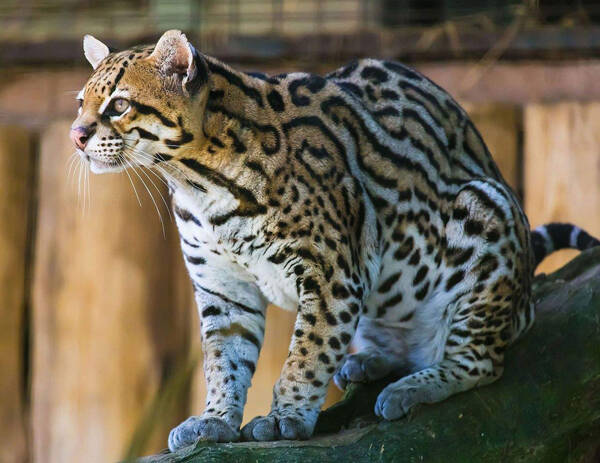Leopardus tigrinus
IUCN
LCBasic Information
Scientific classification
- name:Leopardus tigrinus
- Scientific Name:Leopardus tigrinus,Oncilla
- Outline:Carnivora
- Family:Felidae Ocelothrix
Vital signs
- length:About 50 cm
- Weight:3kg or less
- lifetime:About 15 years
Feature
It is the smallest species in the genus Ocelot
Distribution and Habitat
Distributed in Bolivia, Brazil, Colombia, Costa Rica, Ecuador, French Guiana, Guyana, Panama, Peru, Suriname, Venezuela, Bolivarian Republic.
Prefers to live in forests, found in a wide variety of forest ecosystems, including dense tropical forests from sea level to 1500 meters above sea level. Usually lives at an altitude of 350-1500 meters, the highest altitude reached is 3200 meters. Can live in tropical rainforests or moist mountain forests. Found in moist mountain spruce forests at 1500 meters and above. Also occurs in deciduous forests and subtropical forests. And in Brazil, they also successfully live in tropical savannas and semi-arid areas of planted scrubland, plantations and eucalyptus monocultures.
Appearance
The small tabby cat is one of the smallest wild cats in South America and the smallest species in the genus Margay. It weighs 1.5-3 kg. Males are slightly taller than females and can weigh up to 3 kg, while females usually weigh 1.5-2.0 kg. The male head and body length is 805-830 mm, and the tail length is 317-360 mm. The female head and body length is 763-780 mm, and the tail length is 270-305 mm. In all other aspects, it is very similar to the ocelot. It has short and thick fur, light brown to gray, and rose color, dark brown, and all black are also found. The muzzle is usually lighter than the rest of the body, and there are 7 to 13 dark rings on the tail, which ends with a dark tip. The limbs are covered with black spots, and the backs of the ears are black with a white spot near the center of the spots. The eye color ranges from light to dark brown. The black species of the all-black small tabby cats account for about 1/5 of the total number.
Details
The Oncilla (scientific name: Leopardus tigrinus) has three subspecies. It is one of the smallest wild cats in South America and the smallest in the genus Oncilla. It is very similar to the Oncilla in all other aspects. The all-black Oncilla accounts for about 1/5 of the total number.

The tabby cat is an agile climber and a solitary night traveler. Despite its small size, it is also very ferocious, especially the males. It generally catches birds and rodents for food. When catching birds, it is able to remove the feathers of the prey before ingesting.
Cubs are usually born in February and August each year. The gestation period is 74-76 days, and 1-3 cubs are born in one litter. Their teeth usually grow together, not one by one. They open their eyes 17 days after birth and start eating solid food 55 days later.
Deforestation remains the biggest threat to the survival of the tabby cat. Although all tabby cats are protected, there were 13,000 in 1977 and 84,500 in 1983. Tabby cats have been installed with surveillance devices, and evidence shows that poaching still occurs from time to time.
Listed in the 2016 IUCN Red List of Threatened Species ver 3.1 - Vulnerable (VU).
Protect wild animals and eliminate game.
Maintaining ecological balance is everyone's responsibility!








